#1051 Aurora at Midnight May 05, 1998
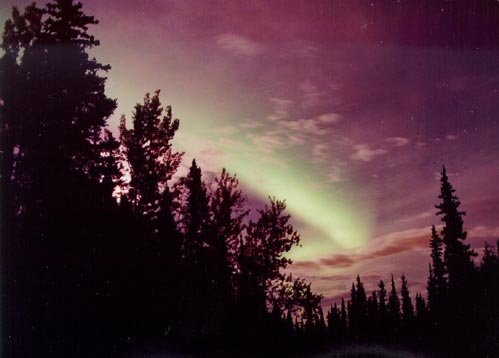
“What's happening behind those trees? Aurora. This picture was taken at midnight near Fairbanks, Alaska, and captures familiar trees, common clouds, and a glowing sky markedly different than a sunset. Particularly strange is the green auroral ring caused by ionized oxygen high in the Earth's atmosphere. The small water droplets composing clouds reflect and absorb aurora light, giving clouds a reddish tinge. The above picture was taken on September 20th of last year. In the next few years the Sun will reach the most active part of its 11 year cycle, meaning more puffs of high energy solar particles will be released, and more spectacular auroras will occur when these particles strike the Earth."
Copyright: J. CurtisU. Alaska Fairbanks
#1052 Beijing Ancient Observatory May 06, 1998
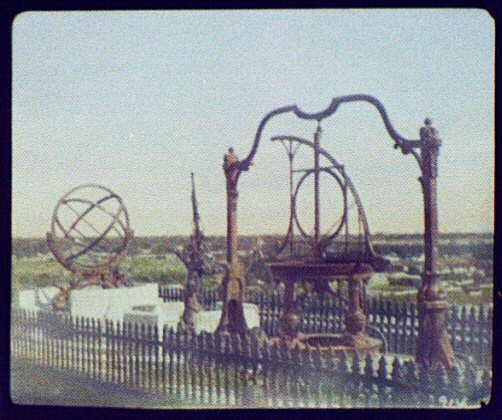
“Did observatories exist before telescopes? One example that still stands today is the Beijing Ancient Observatory in China. Starting in the 1400s astronomers erected large instruments here to enable them to measure star and planet positions with increasing accuracy. Pre-telescopic observatories throughout the world date back to before recorded history, providing measurements that helped to determine when to plant crops, how to navigate ships, and when religious ceremonies should occur. The above hand-painted lantern slide was originally taken in 1895."
Copyright: Public domain
#1053 A Powerful Gamma-ray Burst May 07, 1998

“Gamma-ray bursts are thought to be the most powerful explosions in the Universe, yet the cause of these high-energy flashes remains a mystery. Blindingly bright for space-based gamma-ray detectors the burst sources are so faint at visible wavelengths that large telescopes and sensitive cameras are required to search for them. The faint optical flash from a relatively intense gamma-ray burst detected on December 14th of last year seems to have originated in the galaxy indicated in this Hubble Space Telescope image - taken months after the burst had faded from view. Astronomers have recently announced that this galaxy's spectrum, recorded using the large Keck telescope atop Hawaii's Mauna Kea, indicates that it lies at a distance of about 12 billion light-years. The energy required to produce the observed flash of gamma-rays from this distance would be staggering! Some estimates suggest that in a few seconds the burster released the equivalent energy of several hundred supernovae (exploding stars). The eruption of such a large amount of energy in such a short time is so extreme that even exotic theoretical models of the bursters are being challenged. Could the bursts be caused by the cataclysmic merger of neutron stars with black holes ... or something as yet unknown?"
Copyright: Public domain
#1054 A Gamma-Ray Burst Supernova? May 08, 1998
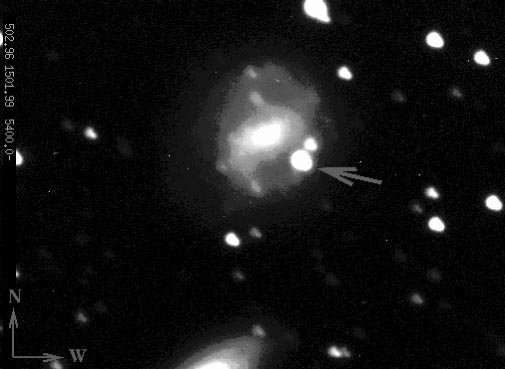
“Did a gamma-ray burst precede this supernova? This intriguing suggestion came to light yesterday with the discovery of an evolving supernova that is potentially coincident with the position of gamma-ray burst GRB 980425, which occurred just two weeks ago. If true, this would tie together the two most violent phenomena known in the universe. The supernova, indicated by the arrow, appears to be somewhat unusual, for one reason because of its extremely bright radio emission. The host galaxy has a redshift of 0.0085, placing it at the relatively close distance of about 125 million light years away. Today it remains undetermined whether the two events are related - perhaps the evolution of the supernova over the next few weeks will provide some clues."
Copyright: Public domain
#1055 The Water Vapor Channel May 09, 1998

“What alien planet's bizarre landscape lurks below these fiery-looking clouds? It's only Planet Earth, of course ... as seen on the Water Vapor Channel. Hourly, images like this one (an infrared image shown in false color) are brought to you by the orbiting Geostationary Operational Environmental Satellites' (GOES) multi-channel imagers. These instruments can produce images at the infrared wavelength of 6.7 microns or about 10 times the wavelength of visible light, recording radiation emitted by water vapor in the upper troposphere. Bright regions correspond to high concentrations of water vapor while dark spots are relatively dry areas. Atmospheric water vapor is invisible to the eye and produced by evaporation from the oceans. Convected upward in the tropical zones it affects the climate by contributing substantially to the greenhouse effect."
Copyright: Public domain
#1056 Skylab Over Earth May 10, 1998

“Skylab was an orbiting laboratory launched by a Saturn V rocket in May 1973. Skylab was visited three times by NASA astronauts who sometimes stayed as long as two and a half months. Many scientific tests were performed on Skylab, including astronomical observations in ultraviolet and X-ray light. Some of these observations yielded valuable information about Comet Kohoutek, our Sun and about the mysterious X-ray background - radiation that comes from all over the sky. Skylab fell back to earth on 11 July 1979."
Copyright: Public domain
#1057 Callisto in True Color May 11, 1998
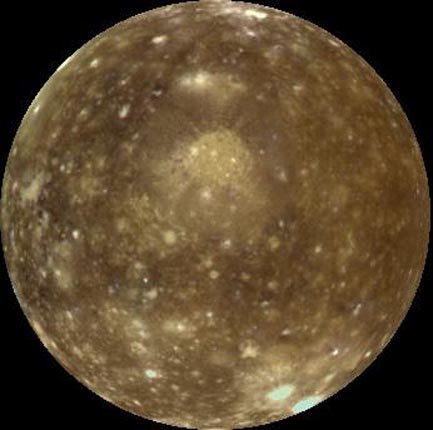
“Callisto's surface has many stories to tell. The most distant of Jupiter's Galilean Moons, Callisto shows the highest density of impact craters in the Solar System, but harbors no volcanoes or even any large mountains. Callisto's surface is laced with cracks and craters from billions of years of collisions with interplanetary debris. This image shows Callis"
Copyright: Public domain
#1058 Callisto Enhanced May 12, 1998
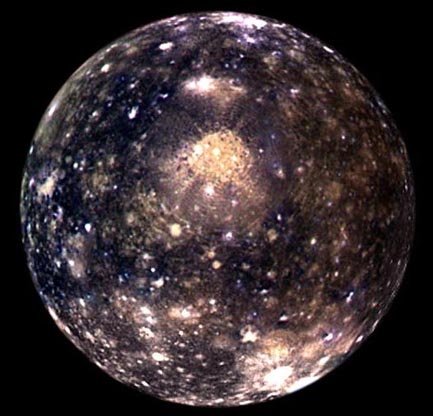
“Callisto is half rock and half ice. This moon of Jupiter is approximately the size of the planet Mercury, making it the third largest moon in the Solar System, after Ganymede and Titan. Callisto's icy surface is billions of years old, lacks any sign of volcanic activity, and is densely covered with rifts and craters. These features are particularly apparent in this contrast-enhanced image taken by the Galileo spacecraft, and released last week. Visible near the image center is Valhalla, one of the largest impact craters in the Solar System, measuring about 4,000 kilometers across. The rings and size of Valhalla make its appearance similar to the Caloris Impact Basin on Mercury."
Copyright: Public domain
#1059 Occultations and Rising Moons May 13, 1998

“On April 23, the rising crescent Moon occulted (passed in front of) Venus and Jupiter. The double occultation was a rare event and only visible from certain locations tracing a path across Earth's surface. This dramatic telephoto picture was taken at one such location, Ascension Island in the South Atlantic. The sunlit crescent is over-exposed revealing the rest of the lunar surface illuminated by faint earthshine. Venus is emerging just beyond the crescent's tip and Jupiter is trailing above the dark lunar edge with a spot of light, Jupiter's moon Ganymede, between the lunar limb and the planet's disk. Look closely at Jupiter and you can see yet another Jovian moon, Io, just visible against Jupiter's glare!"
Copyright: Olivier Staiger
Upvote! Resteem! Comment! As you like it! Thank you for attention!